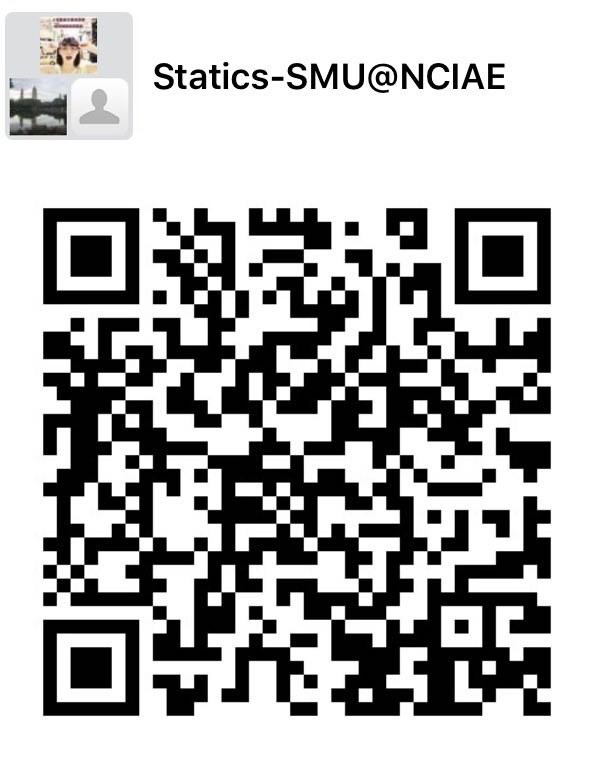Syllabus for GE 204se
Statics for NCIAE
2018
- Course description
- General information
- Textbook
- Notes
- Schedule
- Assignments
- Video lectures
- English/Chinese technical terminology equivalents
- Resources
Course description
This course is offered in partnership with the North China Institute of Aerospace Engineering (NCIAE). Professor Xu Jingman (NCIAE) is the primary instructor and Dr. Rico Picone is visiting NCIAE for three weeks to instruct a portion of the course.
The following is the course description from the SMU catalog. Course represents the transition from theoretical studies of forces and equilibrium, as studied in physics, to applied science. The equilibrium of a particle when acted upon by a system of forces and the equilibrium of bodies in two and three dimensions are studied. Also covers equilibrium considerations for the design of trusses and machines, effects of friction on equilibrium and calculations of centroids and center of gravity.
General information
- Location
- NCIAE
- Times
- weekdays 8–9:50
- Website
- GE 204 Website
secrets
Textbook
(RW) Ferdinand P. Beer, E. Russell Johnston, Jr., Elliot R. Eisenberg. Vector Mechanics for Engineers: Statics. Seventh Edition. McGraw-Hill.
Notes
Partial notes will be posted, below. I will let everyone know via WeChat when each lecture is ready to be printed. Please print each set of lecture notes before class and bring it. There are fill-ins and such.
- Moments, couples, and basketballs
- Introduction to 2D trusses and the method of joints
- The method of sections
Schedule
The following schedule is tentative.
| meeting | topics introduced | reading | assignment due |
|---|---|---|---|
| introduction to: rigid body motion in space, degrees of freedom, couples, moment of a force, moment about an axis | |||
| moment of a force about a point, examples | 4.1-4.4 | ||
| moment of a force about an axis, examples | 4.5 | Assignment #1 | |
| resultant forces and moments, 3D moments, examples | 4.6, 4.7 | ||
| distributed loading, examples | 4.8, 4.9 | Assignment #2 | |
| introduction to equilibrium of a rigid body, conditions for equilibrium, free-body diagrams, examples | 5.1, 5.2 | ||
| equilibrium equations in 2D, examples | 5.3, 5.4 | ||
| two-force members, 3D equilibrium equations, examples | 5.5, 5.6 | Assignment #3 | |
| statical determinacy, examples | 5.7 | ||
| introduction to structures, trusses and frames, method of joints, examples | 6.1, 6.2 | Assignment #4 | |
| method of sections, examples | 6.3, 6.4 | Assignment #5 | |
| frames and machines, examples | 6.5, 6.6 | ||
| introduction to dry friction, examples | 7.1, 7.2, 7.3 | Assignment #6 | |
| final examination | |||
| final examination review |
Assignments
Assignment #1
- Due Wednesday.
- Problems 4-7, 4-8, and 4-21.
Assignment #2
- Due Friday.
- Problems 4-43, 4-44, 4-56, 4-106, and 4-142.
Assignment #3
- Due Wednesday.
- Problems 5-21, 5-23, 5-24, and 5-29.
Assignment #4
- Due Friday.
- Problems 5-64, 5-67, and 5-81.
Assignment #5
- Due Monday.
- Problems 6-1, 6-7, and 6-11.
Assignment #6
- Due Wednesday.
- Problems 6-72, 6-76, and 6-78.
Video lectures
Some video recordings of my lectures will be available on YouKu, with links, below.
The WeChat group for the course is called Statics-SMU@NCIAE and has the following QR code.

English/Chinese technical terminology equivalents
Below is a list of some useful terminological equivalents. Thank you Dr. Xu Jingman and Benjamin.
- force 力
- torque 扭矩
- moment 力矩
- mass 质量
- gravity 重力
- weight 重量
- coordinate system 坐标系
- vector 矢量
- magnitude of vector 矢量的大小
- direction of vector 矢量的方向
- cross product $\textbf{x}\times\textbf{y}$ 叉乘(积)
- dot product $\textbf{x}\cdot\textbf{y}$ 点乘(积)
- projection 投影
- parallel 平行
- perpendicular 垂直
- equilibrium 平衡
- static 静力
- reaction force 反作用力
- external force 外力
- force couple 力偶
- plane (geometric) 平面(几何)
- simplify 简化
- scalar 标量
- normal force
- distributed force
- pressure
- position
- velocity
- acceleration
- momentum
- sum
- product
- derivative
- integral
- center of mass
- centroid
Resources
-
Here is the Python script from class. Once Python and the package
sympyare installed, open a terminal window,cdto the directory in which you have the.pyscript, and run the script with the following command.python3 solve_symbolic_system.py